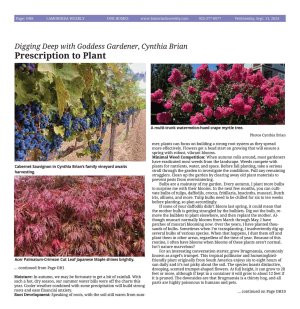|
|
Published September 11th, 2024
|
Digging Deep with Goddess Gardener, Cynthia Brian
|
| Prescription to Plant |
| By Cynthia Brian |
 |
| A purple crape myrtle is full of flowing flowers. Photos Cynthia Brian |
"Gardening is a way of showing that you believe in tomorrow"
 Audrey Hepburn
Audrey Hepburn
 Only two weeks until autumn officially arrives. With the intense heat of this past summer, a cooler fall offers a welcome prescription to plant. The summer sun fried the leaves on many plants. On the hottest days, I installed umbrellas to shade my gardenias, heucheras, geums, and penstemons. Since July when temperatures were blazing, I have positioned 30 containers of Proven Winners reblooming azaleas snuggled under the canopy of my camellia tree awaiting optimal weather for final situating. Because all newly planted specimens need ample water and mild warmth to acclimate to their new environs, I anticipate getting these shrubs in the ground in late September, or maybe even early October.
Only two weeks until autumn officially arrives. With the intense heat of this past summer, a cooler fall offers a welcome prescription to plant. The summer sun fried the leaves on many plants. On the hottest days, I installed umbrellas to shade my gardenias, heucheras, geums, and penstemons. Since July when temperatures were blazing, I have positioned 30 containers of Proven Winners reblooming azaleas snuggled under the canopy of my camellia tree awaiting optimal weather for final situating. Because all newly planted specimens need ample water and mild warmth to acclimate to their new environs, I anticipate getting these shrubs in the ground in late September, or maybe even early October.
 Now is the time to plan for planting. I am busy helping clients prepare for the coming season. For a prescription that yields healthy results, fall is the perfect time to plant everything.
Now is the time to plan for planting. I am busy helping clients prepare for the coming season. For a prescription that yields healthy results, fall is the perfect time to plant everything.
 Why is autumn an excellent time to start digging deep?
Why is autumn an excellent time to start digging deep?
 Cooler Temperatures: Because the sun's angle is lower in the sky in fall, its rays strike the earth at a more oblique angle, reducing the intensity of the heat compared to summer days.
Cooler Temperatures: Because the sun's angle is lower in the sky in fall, its rays strike the earth at a more oblique angle, reducing the intensity of the heat compared to summer days.
 Newly planted specimens endure less sun stress, allowing them to establish stronger roots.
Newly planted specimens endure less sun stress, allowing them to establish stronger roots.
 Milder Sunlight: Fall days are shorter, and nights are cooler. The milder sunlight combined with the cooler temperatures creates a comfortable environment for gardeners to plant. Without the extreme heat of summer, plants can establish themselves before the next blooming season.
Milder Sunlight: Fall days are shorter, and nights are cooler. The milder sunlight combined with the cooler temperatures creates a comfortable environment for gardeners to plant. Without the extreme heat of summer, plants can establish themselves before the next blooming season.
 Moisture: In autumn, we may be fortunate to get a bit of rainfall. With such a hot, dry season, our summer water bills were off the charts this year. Cooler weather combined with some precipitation will build strong roots and ease financial anxiety.
Moisture: In autumn, we may be fortunate to get a bit of rainfall. With such a hot, dry season, our summer water bills were off the charts this year. Cooler weather combined with some precipitation will build strong roots and ease financial anxiety.
 Root Development: Speaking of roots, with the soil still warm from summer, plants can focus on building a strong root system as they spread more effectively. Flowers get a head start on growing that will ensure a spring with robust, vibrant blooms.
Root Development: Speaking of roots, with the soil still warm from summer, plants can focus on building a strong root system as they spread more effectively. Flowers get a head start on growing that will ensure a spring with robust, vibrant blooms.
 Minimal Weed Competition: When autumn rolls around, most gardeners have eradicated most weeds from the landscape. Weeds compete with plants for nutrients, water, and space. Before fall planting, take a serious stroll through the garden to investigate the conditions. Pull any remaining stragglers. Clean up the garden by clearing away old plant materials to prevent pests from overwintering.
Minimal Weed Competition: When autumn rolls around, most gardeners have eradicated most weeds from the landscape. Weeds compete with plants for nutrients, water, and space. Before fall planting, take a serious stroll through the garden to investigate the conditions. Pull any remaining stragglers. Clean up the garden by clearing away old plant materials to prevent pests from overwintering.
 Bulbs are a mainstay of my garden. Every autumn, I plant more bulbs to surprise me with their blooms. In the next few months, you can cultivate bulbs of tulips, daffodils, crocus, fritillaria, hyacinths, muscari, Dutch iris, alliums, and more. Tulip bulbs need to be chilled for six to ten weeks before planting, so plan accordingly.
Bulbs are a mainstay of my garden. Every autumn, I plant more bulbs to surprise me with their blooms. In the next few months, you can cultivate bulbs of tulips, daffodils, crocus, fritillaria, hyacinths, muscari, Dutch iris, alliums, and more. Tulip bulbs need to be chilled for six to ten weeks before planting, so plan accordingly.
 If some of your daffodils didn't bloom last spring, it could mean that the mother bulb is getting strangled by the bulblets. Dig out the bulb, remove the bulblets to plant elsewhere, and then replant the mother. Although muscari normally blooms from March through May, I have patches of muscari blooming now. Over the years, I have planted thousands of bulbs. Sometimes when I'm transplanting, I inadvertently dig up several bulbs of various species. When that happens, I dust them off and plant them in other areas, regardless of the time of year. Because of this routine, I often have blooms when blooms of these plants aren't normal. Isn't nature marvelous?
If some of your daffodils didn't bloom last spring, it could mean that the mother bulb is getting strangled by the bulblets. Dig out the bulb, remove the bulblets to plant elsewhere, and then replant the mother. Although muscari normally blooms from March through May, I have patches of muscari blooming now. Over the years, I have planted thousands of bulbs. Sometimes when I'm transplanting, I inadvertently dig up several bulbs of various species. When that happens, I dust them off and plant them in other areas, regardless of the time of year. Because of this routine, I often have blooms when blooms of these plants aren't normal. Isn't nature marvelous?
 For an interesting conversation starter, grow Brugmansia, commonly known as angel's trumpet. This tropical pollinator and hummingbird-friendly plant originally from South America enjoys six to eight hours of sun daily and it's not picky about the soil. The species boasts distinctive, drooping, scented trumpet-shaped flowers. At full height, it can grow to 20 feet or more, although if kept in a container it will grow to about 12 feet if it is pruned. The downsides are that Brugmansia is a thirsty hog, and all parts are highly poisonous to humans and pets. What's happening in my garden? My Naked Ladies are fading, but still showstoppers. I have been creating glorious arrangements with them and adding various foliage, including stems from crocosmia, fern, guava, and palm. The crape myrtles were especially gorgeous this year, especially my watermelon pink and purple varieties. I'm betting that their autumn leaves will be spectacularly colorful as well. (For more information on the benefits of growing Naked Ladies and crape myrtles, read the Aug. 28 column.)
For an interesting conversation starter, grow Brugmansia, commonly known as angel's trumpet. This tropical pollinator and hummingbird-friendly plant originally from South America enjoys six to eight hours of sun daily and it's not picky about the soil. The species boasts distinctive, drooping, scented trumpet-shaped flowers. At full height, it can grow to 20 feet or more, although if kept in a container it will grow to about 12 feet if it is pruned. The downsides are that Brugmansia is a thirsty hog, and all parts are highly poisonous to humans and pets. What's happening in my garden? My Naked Ladies are fading, but still showstoppers. I have been creating glorious arrangements with them and adding various foliage, including stems from crocosmia, fern, guava, and palm. The crape myrtles were especially gorgeous this year, especially my watermelon pink and purple varieties. I'm betting that their autumn leaves will be spectacularly colorful as well. (For more information on the benefits of growing Naked Ladies and crape myrtles, read the Aug. 28 column.)
 Grapes are ripening and vining into my crabapple tree. The Cabernet Sauvignon will be harvested soon in our family Napa vineyards. My red abutilon, Callianthe picta `Nabob', known as Chinese lantern, has reached new heights since I've been carefully cutting its canopy. It is a member of the mallow family, which also includes hollyhock and hibiscus. The red pendent, bell-shaped flowers attract bees and butterflies, while hummingbirds reach between the sepals and petals to seek out the nectar. The flowers are heralded as edible, although I have never eaten one. A big plus of planting this perennial is that it loves a sunny location and requires very little water, preferring dry soil.
Grapes are ripening and vining into my crabapple tree. The Cabernet Sauvignon will be harvested soon in our family Napa vineyards. My red abutilon, Callianthe picta `Nabob', known as Chinese lantern, has reached new heights since I've been carefully cutting its canopy. It is a member of the mallow family, which also includes hollyhock and hibiscus. The red pendent, bell-shaped flowers attract bees and butterflies, while hummingbirds reach between the sepals and petals to seek out the nectar. The flowers are heralded as edible, although I have never eaten one. A big plus of planting this perennial is that it loves a sunny location and requires very little water, preferring dry soil.
 If you'd like to pick up free seeds and potpourri, visit me at the 2024 Nonprofit of the Year's Be the Star You Are!r booth on Sept. 28 at the Pear and Wine Festival.
If you'd like to pick up free seeds and potpourri, visit me at the 2024 Nonprofit of the Year's Be the Star You Are!r booth on Sept. 28 at the Pear and Wine Festival.
 Do your homework and make a list of what you'd like to grow. Prepare and loosen your soil, add organic matter, and smooth the soil surface. Wait until the weather is cooler and then implement your prescription to plant. Goddess Gardener orders! Believe in tomorrow!
Do your homework and make a list of what you'd like to grow. Prepare and loosen your soil, add organic matter, and smooth the soil surface. Wait until the weather is cooler and then implement your prescription to plant. Goddess Gardener orders! Believe in tomorrow! |
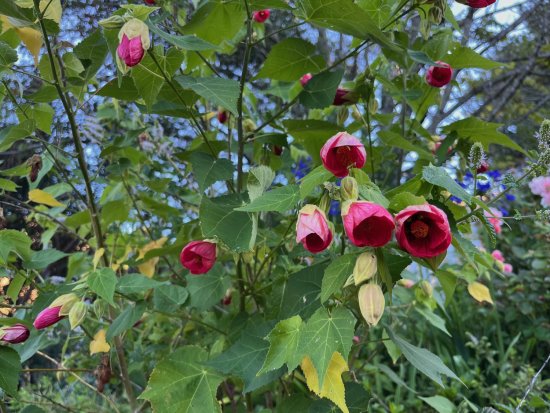 |
| Chinese lanterns, Abutilon `nabob, attract butterflies, bees, and hummingbirds. Photos Cynthia Brian |
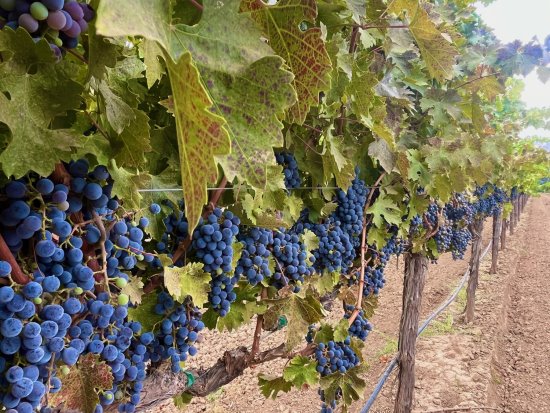 |
| Cabernet Sauvignon in Cynthia Brian's family vineyard awaits harvesting. Photos Cynthia Brian |
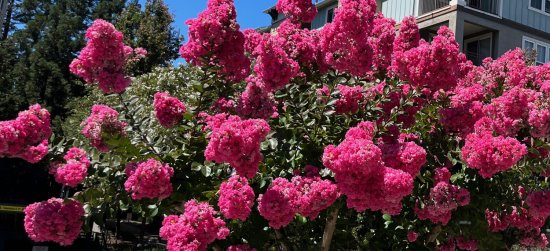 |
| A multi-trunk watermelon-hued crape myrtle tree. Photos Cynthia Brian |
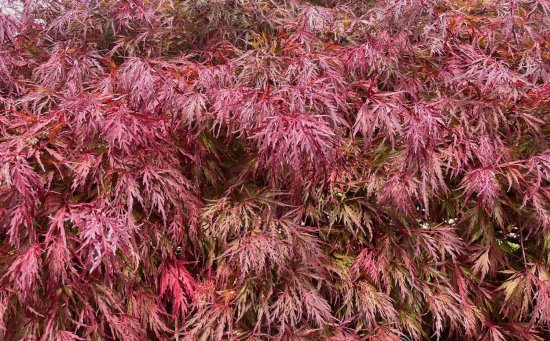 |
| Acer Palmatum-Crimson Cut Leaf Japanese Maple shines brightly.Photos Cynthia Brian |
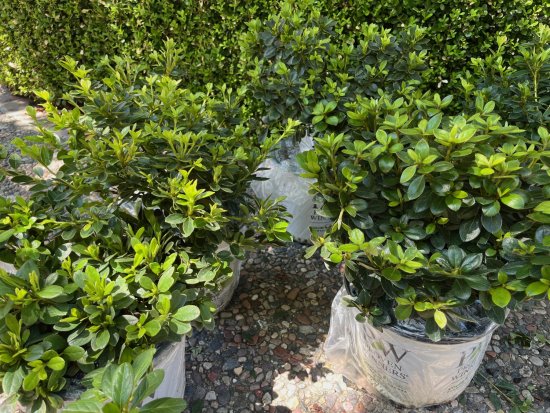 |
| Azaleas from Spring Meadow's Proven Winner waiting to be planted
in fall. |
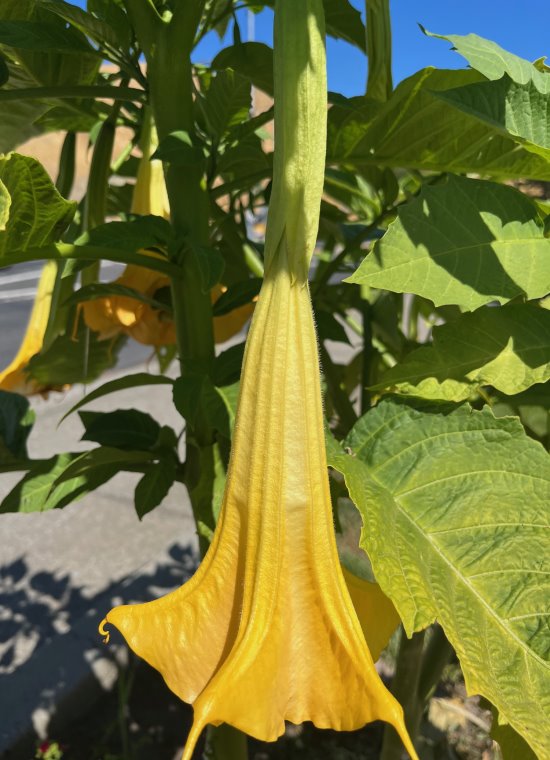 |
| Angel trumpet flower, Brugsmansia aurea, in yellow. |
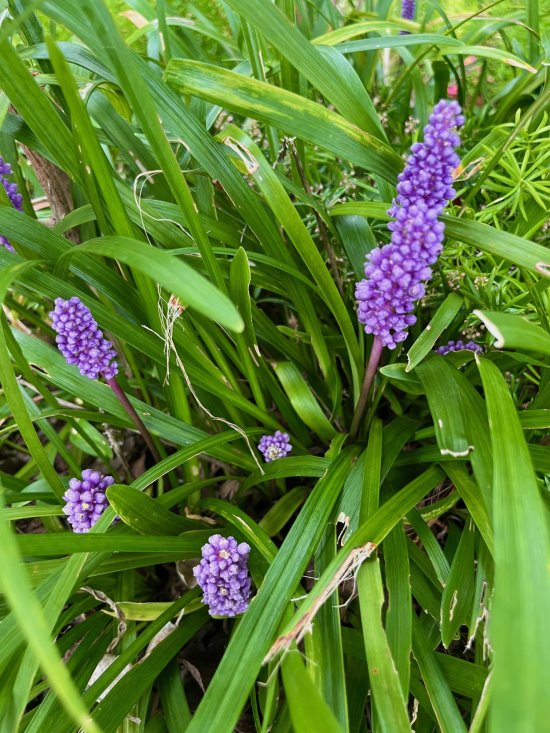 |
| Purple muscari blooming in September. |
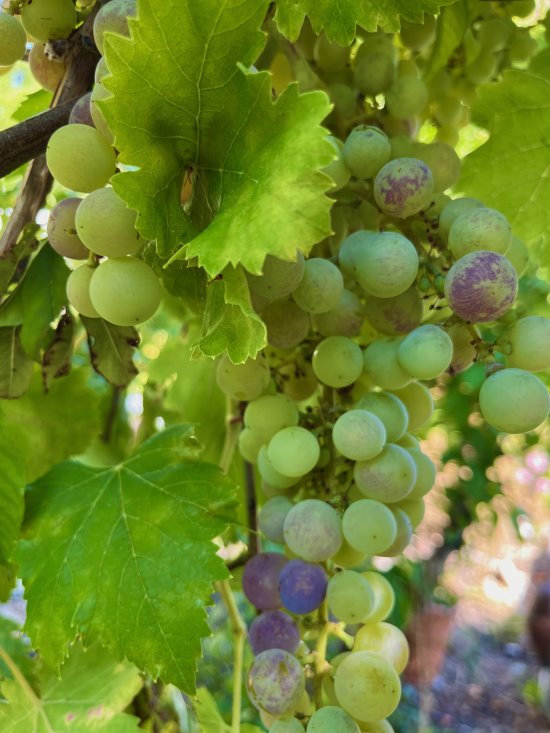 |
| Sweetwater table grapes ripening in Cynthia Brian's Garden. |
 |
| Cynthia Brian sits on the hill with her favorite Naked Ladies. |
| |
| For more gardening advice for all seasons, check out Growing with the Goddess Gardener at
https://www.CynthiaBrian.com/books. Raised in the vineyards of Napa County, Cynthia Brian is a New York Times best-selling author, actor, radio personality, speaker, media and writing coach as well as the Founder and Executive Director of Be the Star You Are!r 501 c3 which was just honored as the 2024 Nonprofit of the Year by the Moraga Chamber of Commerce. Tune into Cynthia's StarStyler Radio Broadcast at
www.StarStyleRadio.com. Her newest children's picture book, Books in the Barnyard: Oh Deer!, from the series, Stella Bella's Barnyard Adventures is available at
https://www.CynthiaBrian.com/online-store. Hire Cynthia for writing projects, garden consults, and inspirational lectures.
Cynthia@GoddessGardener.com
https://www.CynthiaBrian.com |
|
|
|












